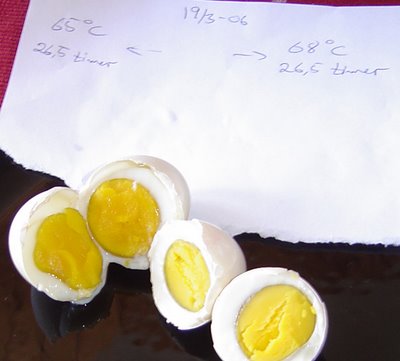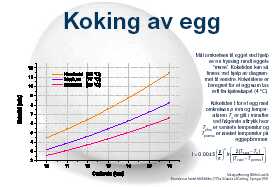It was with immense anticipation i opened the book "
Kitchen chemistry" from RS*C (the British Royal Society of Chemistry) when I received it almost a year ago. The book is a collaboration between Ted Lister and the Michelin-star chef Heston Blumenthal known for his Molecular gastronomy-approach to cooking. Upon closing the book after the first read, I must admit I was slightly disappointed (although there are a number of bright spots as well).

Among the things I find attractive is the beautiful layout and extensive digital material following the book, both on CD and on web, including video clips and dynamic Chime molecular structures). Also, RS*C has been very generous in leaving much of the web based resource material for free.
Molecular gastronomy (MG) has afforded a new and very refreshing approach to cooking, bringing science into the home and restaurant kitchen in a wonderful way. The reason for my disappointment is that this book's approach to using science in the classroom (or school kitchen/lab) is, in my opinion, not refreshing in the same sense. This may be exemplified by:
* The
table of contents of the book tells us that out of 17 chapters, five are dedicated to salt and its role in cooking. I find this rather lopsided in terms of spending valuable book space trying to catch children's attention to science and food. To me, the sixth chapter "
Should beans be cooked with the lid on or off?" also provides an example of what may be interesting to a chef (or an adult), but of limited interest to the children it is claimed to be focused toward: ages 5-11. Is this maybe a result of a chef picking subjects that are the most interesting to him, rather than searching for what may trigger young people? What about taking the French approach of Hervé This and colleagues playing around with egg white foam ("
Wind crystals"), an experiment I find fascinating, and which has been successful also in a few Norwegian schools? (see "
Egg white foam" posting below)
* Second, the experiments laid out are rather closed ended in the terms that approach, method and result are all given in beforehand. There is little for exploration and imagination for neither teacher nor student if one is to follow the book all the way through using all the resources given on a subject (ppt-files, video and student sheets). Through lack of freedom and open ended experiments, the teacher is in a way relegated. The book seem more directed towards the kind of teacher that would use the resources slavishly, rather than one who would go on experimenting together with the students. Accordingly, teachers wanting to adapt the material to her/his situation and class (rather than following the procedures slavishly) may find that the material has to be revised and readapted to her/his setting, although this seems not to be the intention of the book.
Despite being rather critical, I find a number of fascinating subjects making the book fun to read. Subjects like "
The chemistry of flavour" and "
The science of ice cream" make my curiosity tick. Furthermore, many home cooks may find it interesting to read about "
Why do pans stick?", which by the way R. Wolke has discussed in his book "
What Einstein told his cook" posing the wonderful question "Why doesn't anything stick to nonstick cookware? And if nonstick coating won't stick to anything, how do they get it to stick to the pans?". Kitchen Chemistry may be the starting point of fun experiments in the school kitchen, but again - by the teacher that is able to adapt the material to her/his own class and situation rather than following a common path laid out for all.
Maybe the reason for MG being so refreshing, while this book being less, is that MG approaches science on the premises of food/cooking, while this book falls into the traditional pit trap of treating food on the premises of science? For us that are already hooked on science this is a fascinating book with beautiful extra material, but for teachers and students who have not yet fallen in love with the universe of natural sciences, I fear that this may not make it all the way.
Kitchen Chemistry (£19.95) may be obtained from the RS*C Kitchen chemistry web pages (see link above).
Erik








